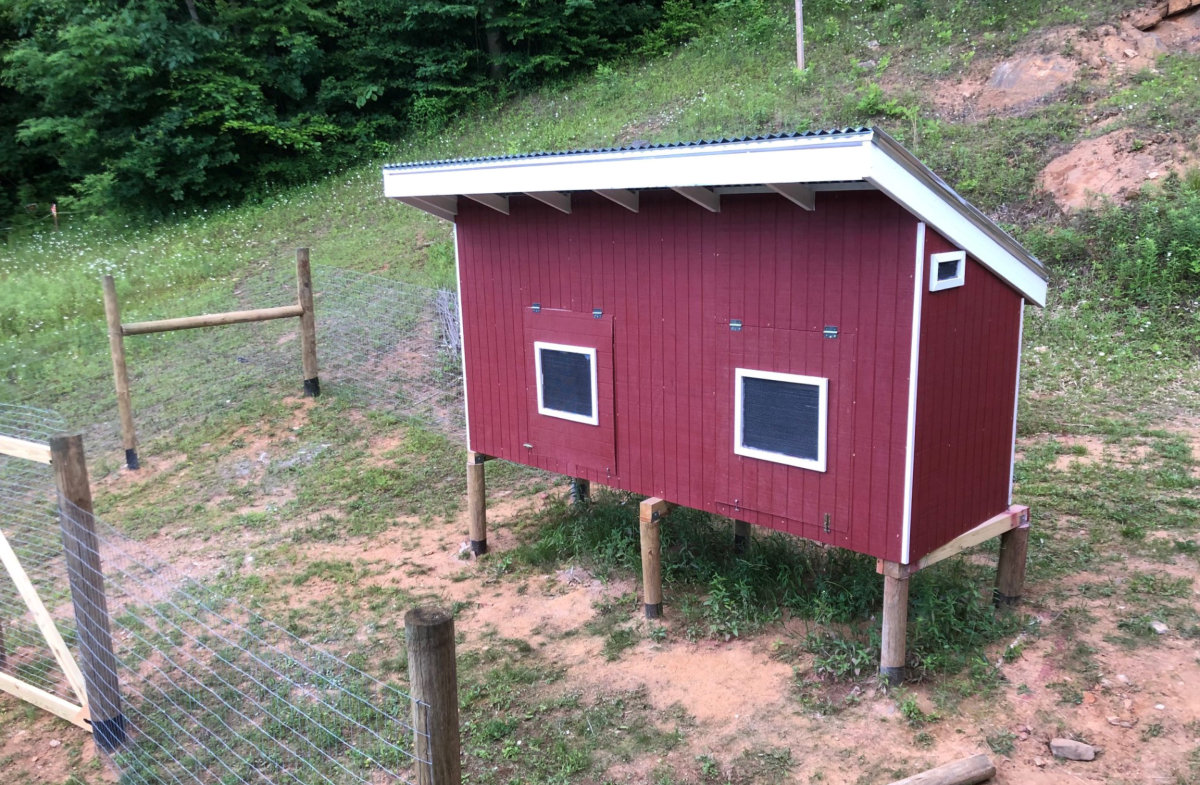
Earlier this week, I read about a fellow prepper who lost most of her chickens to an unknown predator. Today, that’s a shame. In a survival situation, where you are counting on eggs for nutrition, it could be a huge setback.
I’ve lost chickens to predators, but only when they were outside their coop. So, let me review what I have done to make my coop, or hen house, predator proof in hopes that others can benefit from it.
Let me start by saying I find hardware cloth vastly superior to chicken wire, and it has the added bonus of offering multiple sizes. Keeping any opening in the coop and fencing less than half an inch wide is a good start to securing your layers.
Hen House Security
Like home security, henhouse security works in layers. On the inside layer is the henhouse itself. I have never lost a chicken while it was tucked away in the henhouse at night. (Knock on wood.) I attribute this in part to using an automatic door that opens after sunrise and closes after sunset. After the chickens return to their coop as dark falls, the door closes to keep out nocturnal predators. I am using the Chicken Run door, which uses a gear to open and close instead of a string. The gear locks the door in place and keeps it from being pried open by little raccoon hands.
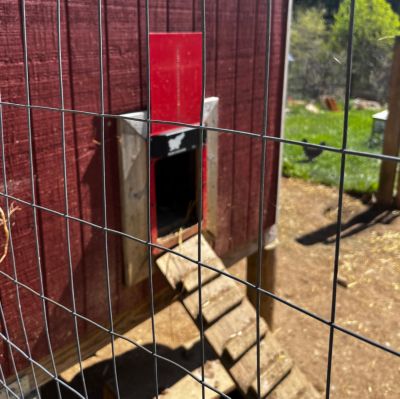
When I lost chickens to owls, it was young chickens that did not stay in the coop at night. When I lost a chicken to a coyote, it was a chicken that flew outside the fence and could not get back home when night fell. Obviously, even the tightest henhouse only protects the hen when she is in it.
On our nightly dog walks, I walk by the chicken run after dark and make sure the door has closed. Ice and snow can jam it open or closed, but only twice in the past year has it not closed. I also look for chickens that didn’t make it inside the coop. When they were young, I often had to scoop up three or four birds and stick them inside. They eventually figured it out. It is now a rare occurrence for a chicken not to return to the henhouse for the night.
Lock it Down
All coop windows have a layer of quarter-inch hardware cloth over them took keep out predators and a layer of window screen to keep out bugs. I don’t know if the latter is necessary, but the former is!
There is no crack or crevice in the henhouse larger than a 3/8 of an inch. We don’t even get snakes in the laying boxes eating eggs, which happens to my neighbors.
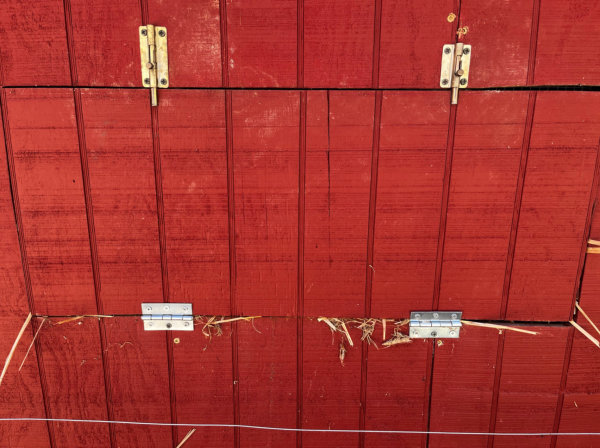
In addition to the automated door, the chicken coop has three openings: a hatch to remove the eggs, and two large doors for clean out the interior. I use different types of locks on the doors top confuse any creatures who figure out how to open one. I also have a good old-fashioned piece of wood that rotates on a screw to hold the door shut.
Wire Fencing
The second layer of protection is our welded wire fencing. I have five-foot high welded-wire fencing with holes that are 2” x 4”. It is mounted to sturdy wooden fence posts. At the bottom of this fencing, I took a 4-foot tall piece of half-inch hardware cloth and bent it into place. It goes two-feet up the fence and two feet of it lies on the ground outside the fence. This keeps critters from digging under the fence or crawling through at ground level. It is very effective.
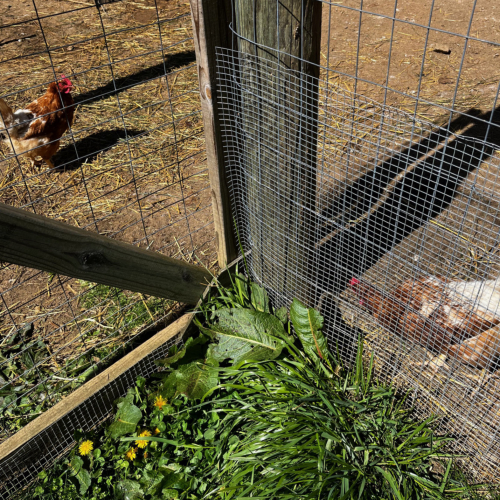
Outside of the owls that fly in, the only critter that has gotten through the fence is a rat. He snuck in around the gate, looking for spilled chicken pellets. I trapped him (or her) before it had kids and compounded my problem.
Outside the wire fencing, I have three strands of electrical fence, our third layer of defense. The lowest strand is ten inches or a foot off the ground. The primary purpose of the electric fence is to keep bears out of the beehives, but it does an excellent job of keeping deer out of the garden and preventing raccoons, skunks, and other small critters from bothering the bees or the chickens. If a rodent tris to climb the welded wire fence, they will hit the electric wire and get the shock of a lifetime.
Because our Magnum 12 fence charger is designed to deter bears, the shock is powerful. No one, man or beast, wants to get shocked a second time. Both my dog and I can attest to that.
Overhead Cover
Our only vulnerability is from above because I do not have a net over the chicken run. The open sky is the route for most of our chicken losses. The rooster helps cut down on these losses. When he spots something fly over, he squawks and all the hens run under the chicken coop and shelter in a cluster. I expect the rooster, who weighs at least eight pounds, is bigger than most of our local hawks. Not sure how he would fare against an eagle, but we don’t see many of them.
If I wanted absolute security, I would find a net and string it up. Not only would this keep flying predators out, it would keep the chickens in. Right now, one flies out every few months and then can’t figure out how to fly back in. Adding some kind of top cover would eliminate most of our losses.
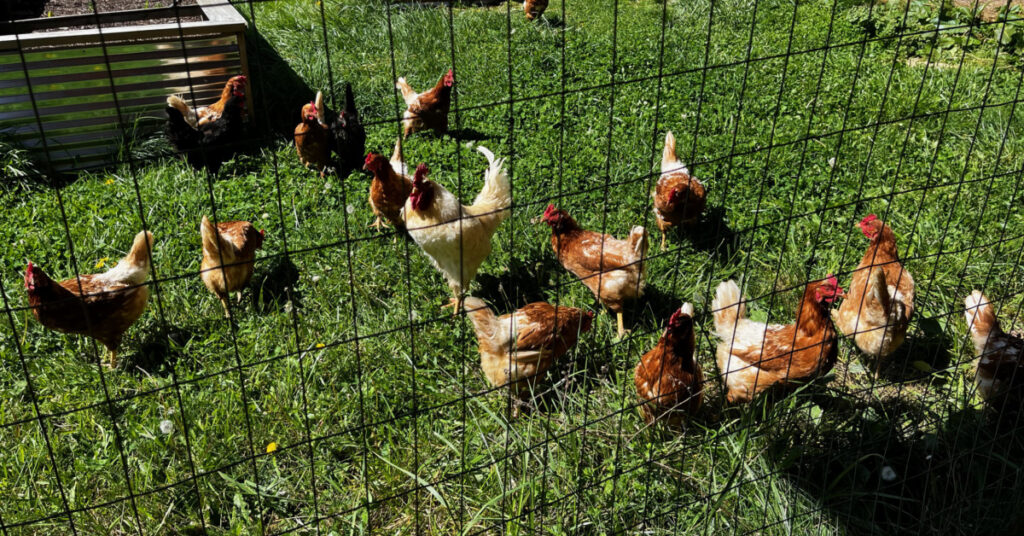
Build it Right the First Time
Our coop is made from scratch out of plywood and T1-11 with a metal roof. We framed it like a house, using 2x4s on 16-inch centers. I joke we could have rented it out as a tiny home before we put chickens in it. Still, being well made has kept our chickens safe. I wouldn’t change a thing.






